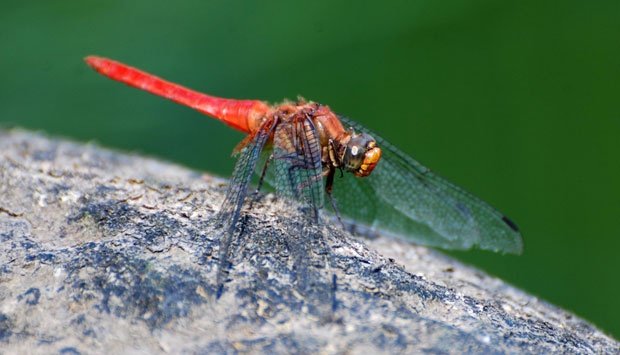
Animal world is full of uniqueness. One of them predators. During this time, African lions or white sharks are famous as the world's number one predator.
But not for a team of scientists from Rutgers University in New Brunswick, United States. research published in the journal Proceedings of the National Academy of Sciences (PNAS) is undermining the assumption of sharks and lions is the number one predator.
In contrast, the Rutgers team of scientists shows the dragonfly as the most brutal hunter and effective in the animal kingdom. experts found that African lions could only capture 25 percent of the total prey they pursued. The white shark, which has 300 cutting teeth, successfully captured half of the total prey they hunted. But the success rate of the dragonfly family hunts its prey turns 95 percent.
"Dragonflies will tear the bodies of their prey and continue chewing them until they form a lump before they finally swallow them," said Michael L. Mei, professor emeritus entomologi at Rutgers.
Appetite dragonflies can be practically endless. stacey Combes, a biomechanics researcher at Harvard University who learned how to fly dragonflies, once witnessed a dragonfly in a laboratory eating out 30 fruit flies in a row. "Dragonflies will continue to eat as long as there is food," he said.
a number of studies published some time ago have also revealed key features of the brain, eyes, and wings of dragonflies, allowing the insect to hunt its prey without hesitation. one study shows the dragonfire system displaying almost the same capacity as humans, especially for selective attention. That is, the dragonfly is able to focus on a single targeted target, even though the prey is flying in the midst of other hordes of flying insects.
Other researchers identified the existence of a kind of circuit center containing 16 nerve cells connecting the dragonfly to the center of the flight motor at the chest. this set of nervous systems allows dragonflies to track moving targets, calculate trajectories to intercept targets, and subtly adjust their flight paths to capture the targets.
Robert Molberg from Union College found evidence that the dragonflow pathway intercepted its prey like a trick used by seafarers. With compound eyes, the dragonfly can predict the direction of its prey, including angle and velocity, then predict its own flight to capture the prey.